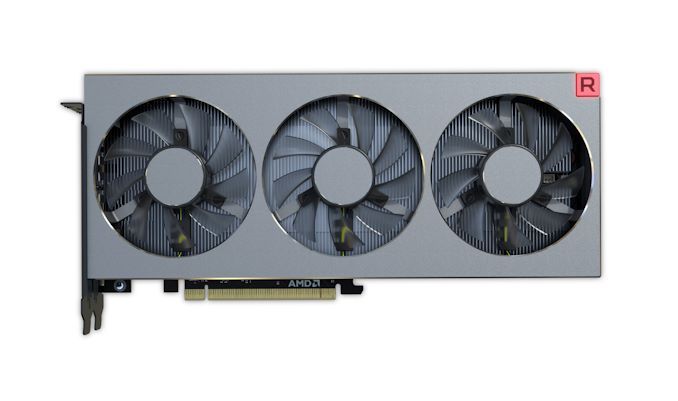The long-awaited AMD Radeon VII is now a reality. But like every new version at this level, the Radeon VII must face a series of tests and comparisons, and here we’ll see how it performs against its predecessors from AMD.

If you look at the table, you can see that the jumps between the generations can be felt with the naked eye. The Radeon VII comes with a clock frequency of 1750 MHz, compared to 1630 MHz RX Vega 64 and 1050 MHz Radeon R9 Fury X. This puts the Radeon VII ahead of the RX Vega 64, and thanks to its open cooling you can keep the tops of the watch longer than with the RX Vega 64. Even if the Radeon VII loses CUs and ROPs, it gains overall performance.
|
class=”c7″>AMD RADEON VII |
AMD RADEON RX VEGA 64 |
AMD RADEON R9 FURY X |
|
|---|---|---|---|
|
Stream processor |
3840 (60 CUs) |
4096 (64 CUs) |
4096 (64 CUs) |
|
ROPs |
64 |
64 |
64 |
|
Base Clock |
1400MHz |
1247 MHz |
n / a |
|
Boost watch |
1750MHz |
1546MHz |
1050MHz |
|
Memory clock |
2.0Gbps HBM2 |
.1.89Gbps HBM2 |
1Gbps HBM |
|
Memory width |
4096 bits |
2048 bits |
4096 bits |
|
VRAM |
16 GB |
8GB |
4GB |
|
Precision simple |
13.8 TFLOPS |
12.7 TFLOPS |
8.6 TFLOPS |
|
Precision double |
3.5 TFLOPS (¼ rate) |
794 GFLOPS (rate of 1/16) |
538 GFLOPS (Rate of 1/4) |
|
Power |
300W |
295W |
275W |
|
Refrigeration |
Triple fan |
Turbine |
Liquid closed circuit |
|
Manufacturing process |
TSMC 7nm |
GloFo 14nm |
TSMC 28nm |
|
GPU |
Vega 20 |
Vega 10 |
Fiji |
|
Architecture |
Vega |
Vega |
GCN 3 |
|
No. of Transistors |
13.2 billion |
12,500 million |
8.900 million |
|
Release date |
2/7/2019 |
8/14/2017 |
6/24/2015 |
|
Start price |
$ 699 |
$ 499 |
$ 649 |
However, the biggest advance over the RX Vega 64 is that AMD has doubled both memory size and bandwidth. This increase is due to the 7 nm manufacturing that allowed AMD to integrate two more HBM2 blocks. There is also an increase in memory clock frequency from 1.89 Gbps per pin to only 2 Gbps per pin in Radeon VII.
Although the stream processors do not switch between R9 Fury X and RX Vega 64, they decrease in Radeon VII. Nevertheless, it is compensated by ever higher clock rates, which significantly increases performance. It’s an interesting fact that the generations double the VRAM and increase the memory clock between generations, along with the decline in production size.
Gaming Performance
As AMD evolves, let’s see how it behaves in games. All have been tested on Full HD, 2K and 4K to see how it behaves. The configuration is Intel Core CPU i7-7820X @ 4.3GHz, Gigabyte Motherboard X299 AORUS Gaming 7 and RAM DDR4-3200 4 x 8GB.
| GAME PERFORMANCE (FPS) | ||||
|---|---|---|---|---|
| AMD Radeon VII | AMD Radeon RX Vega 64 | AMD Radeon R9 Fury X | ||
|
1
|
Battlefield 1 3840×2160 Ultra Quality | 81.1 | 60.3 | 47.9 |
|
2
|
Battlefield 1 2560 x 1440 Ultra quality | 137.6 | 107.3 | 81.8 |
|
3
|
Battlefield 1 1920 x 1080 Ultra quality | 163.5 | 142.2 | 105.8 |
|
4
|
Far Cry 5 3840×2160 Ultra quality | 59 | Four. Five | 33 |
|
5
|
Far Cry 5 2560 x 1440 Ultra quality | 97 | 85 | 59 |
|
6
|
Far Cry 5 1920 x 1080 Ultra quality | 102 | 102 | 78 |
|
7
|
Grand Theft Auto 5 3840×2160 Quality Very high | 48 | 34.7 | 26.1 |
|
8
|
Grand Theft Auto 5 2560 x 1440 Very high quality | 85.5 | 65 | 53 |
|
9
|
Grand Theft Auto 5 1920 x 1080 Very High Quality | 99.6 | 90.4 | 73.7 |
|
10
|
Final Fantasy XV 3840×2160 Ultra quality | 39.8 | 29.6 | 20.5 |
|
11
|
Final Fantasy XV 2560 x 1440 Ultra quality | 69.6 | 54.5 | 42.1 |
|
12
|
Final Fantasy XV 1920 x 1080 Ultra quality | 94.7 | 76.3 | 57.1 |
Evolution is clearly visible here. This is a generation change, especially in the 4K game, although it depends on the game. It should be noted that while there are still no games that can take advantage of the 16Gb VRAM from Radeon VII, this one offers a spectacular performance.
Where the Radeon VII stands out in particular is for a user of Workstation / Content Creation, as in the display the increase of VRAM if it is 100% usable.
Consumption, temperature and noise
Here we continue to compare generations, in this case consumption, temperature and noise. As usual, the consumption refers to the entire system, measured directly at the socket.
| TO | B | C | D | |
|---|---|---|---|---|
|
one
|
Energy consumption, temperature and noise | |||
|
two
|
AMD Radeon VII | AMD Radeon RX Vega 64 | AMD Radeon R9 Fury X | |
|
3
|
Rest consumption | 88 W | 88 W | 89 W |
|
4
|
Consumption charge | 423 W | 440 W | 400 W |
|
5
|
Rest temperature | 32 ºC | 33 ºC | 30 ºC |
|
6
|
Charge Temperature | 84 ºC | 85 ºC | 64 ºC |
|
7
|
Rest noise | 41 dB | 41.2 dB | 40.5 dB |
|
8
|
Noise load | 54.4 dB | 55.4 dB | 44.0 dB |
Here we see very similar consumptions in rest, although the difference is already noticed at the entry in the load, since it is the one that consumes the RX Vega 64 more. Next we have the Radeon VII, followed by the Radeon R9 Fury X. This shows that the 7 nm are more efficient.
Even at temperatures the Radeon R9 leaves Fury X with advantage, because the liquid cooling is perceived and keeps 64 ºC up to full load, 20 degrees less than its successors. Then the Radeon VII and the RX Vega 64 show similar temperatures, although one has a triple fan and the other turbine.
Is the AMD Radeon VII worth changing?
After comparing AMD’s three flagships over time, the final assessment comes. The AMD Radeon VII is a remarkable improvement that surpasses its predecessor in every way, although it’s up to you to see if the starting price is worth it. At the moment you can find a RX Vega 64 for about €500, Against the €750 exit of Radeon VII, which has already set the R9 Fury X.
We are in no doubt, because it is an interesting purchase from the point of view of gamers, especially for the future, when developers begin to take advantage of the 16 GB VRAM, although due to its high cost, even if it is not exaggerated, it falls into the price range of the RTX 2080.
And here we come to the end of our AMD Radeon VII vs. RX Vega 64 vs. R9 Fury X comparison.






Leave a Reply